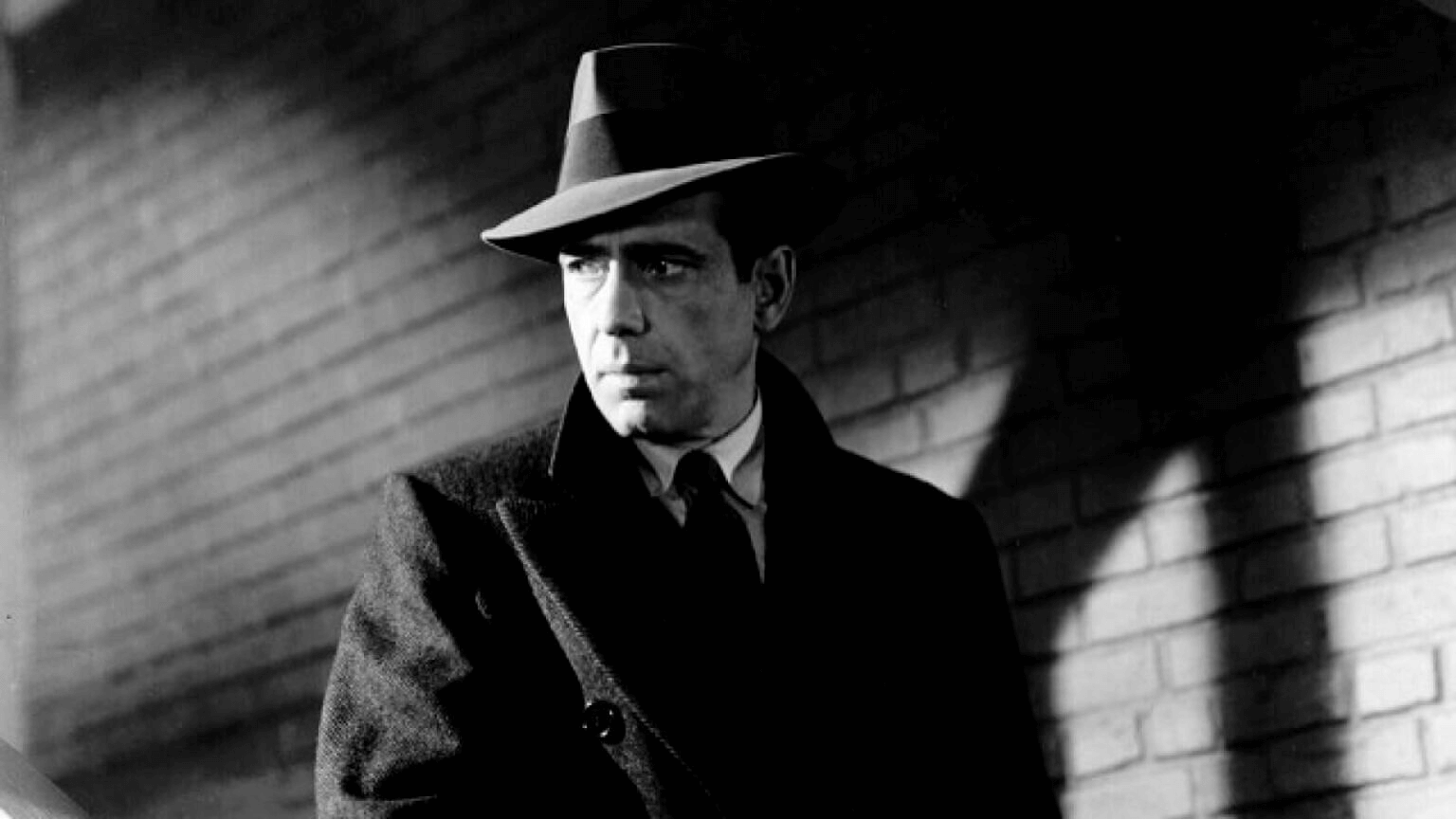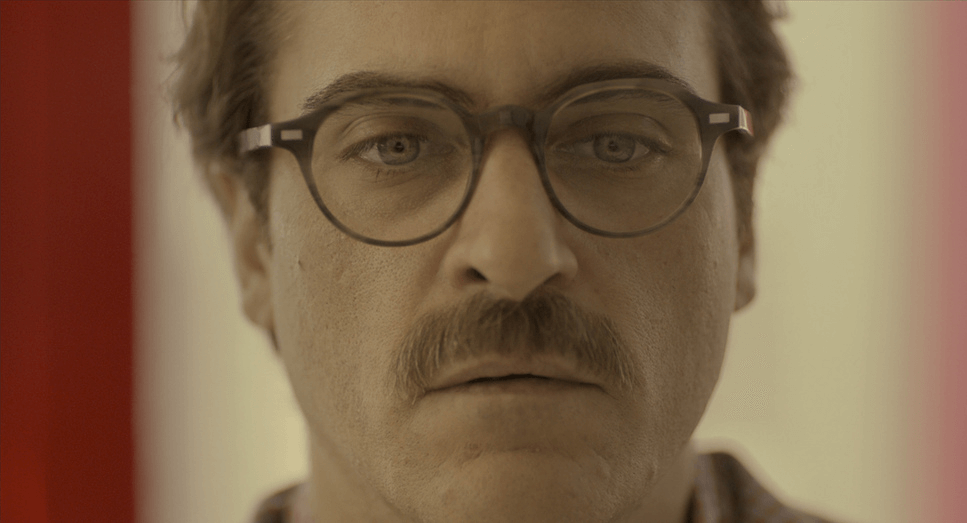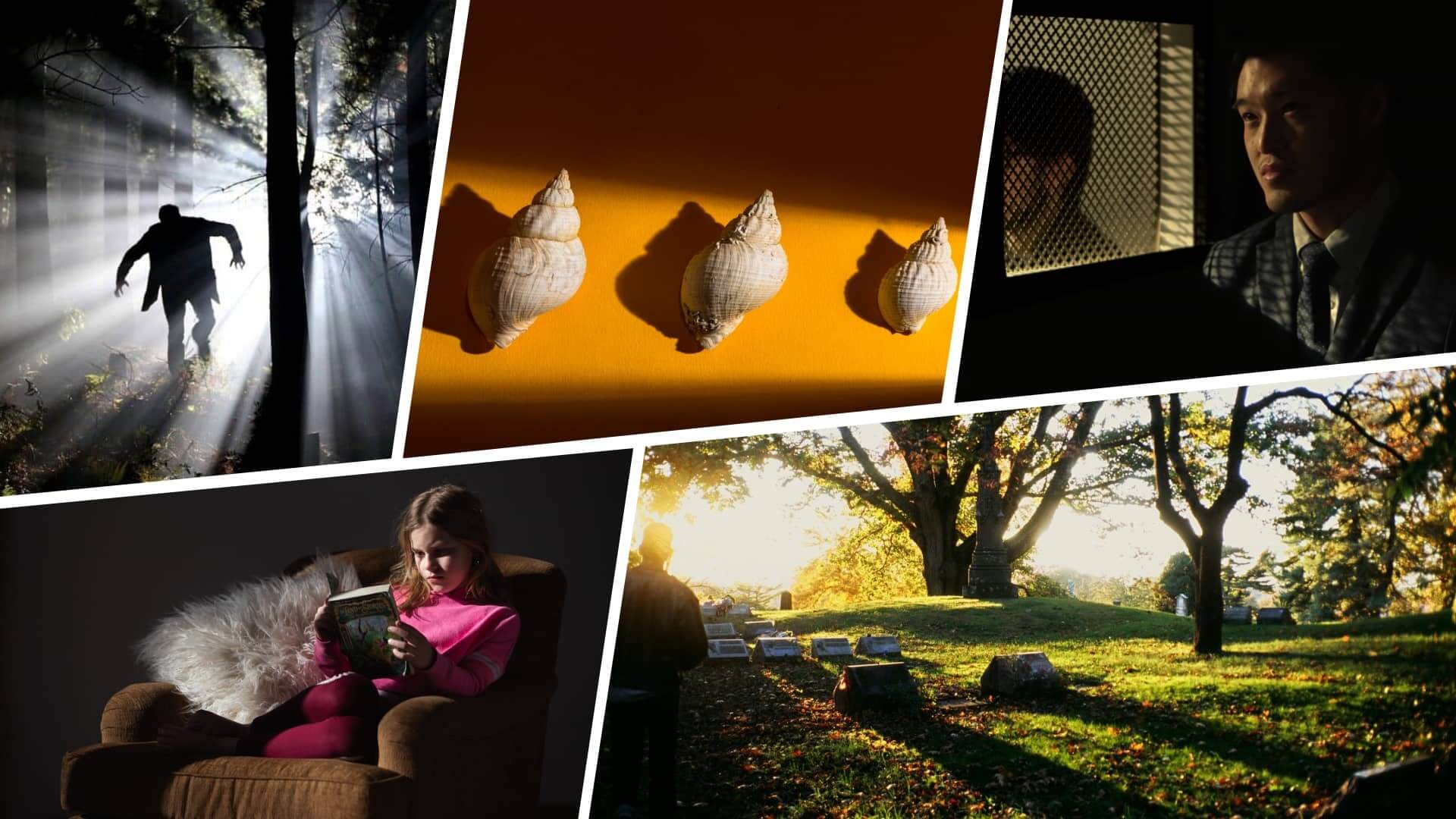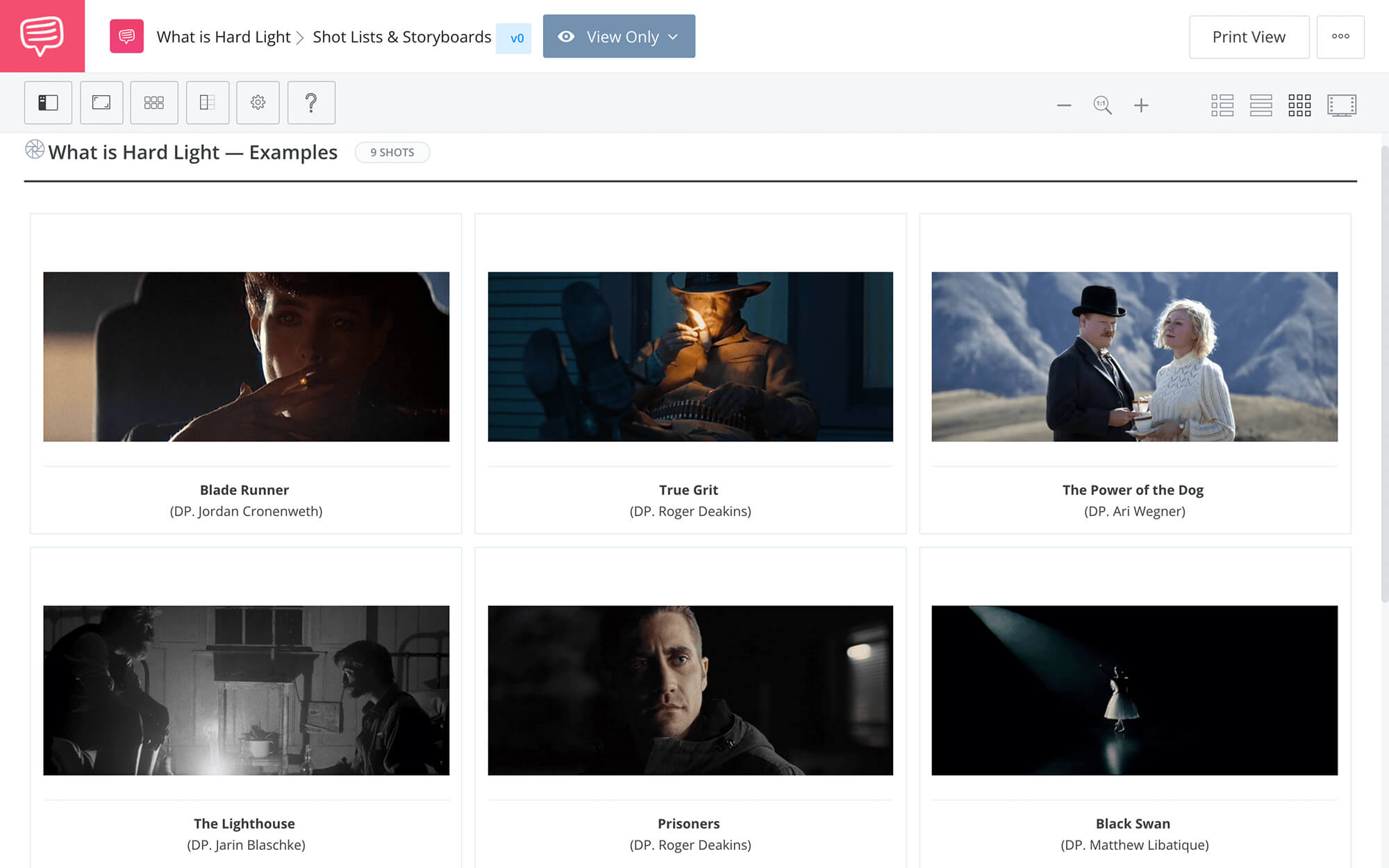Whether you are a cinematographer or photographer, you are very likely to come across a project that will require the use of hard light. High contrast photography, Chiaroscuro lighting, and dramatic images in general are all created with some type of hard light. What is hard light and how does it differ from soft light? We’ll answer these questions and give you some tips to create and shape hard light so that you can use it to create the images you see in your mind.
What is hard light
First, let’s define hard light
You might know hard lighting when you see it, but what is hard light and how is it defined? What are the characteristics that all this type of lighting has? Let’s take a look at the definition to find out.
HARD LIGHTING DEFINITION
What is hard light?
Hard light is a quality of light that casts harsh and well defined shadows. A subject or scene lit with this type of light has a very abrupt transition between the highlights and the shadows. Hard light typically comes from a relatively small source relative to the subject. Light sources that are further away also produce harder light and sharper shadows.
What is hard light used for?
- Harsh shadows
- Distant light source
- Small light source relative to the subject
What is hard light used for?
Hard light vs soft light
As we discussed in the hard lighting definition above, this type of light is defined by the sharp, harsh shadows it creates. This makes it a great light source for more dramatic films or high contrast photography. Specifically, this is the main light source for creating Chiaroscuro lighting in film.

Film Noir embraced this type of lighting
Chiaroscuro lighting creates high contrast scenes by balancing light and dark with little transition between the two. Check out examples and the history of Chiaroscuro lighting in our video breakdown below.
Chiaroscuro Lighting in Film • Subscribe on YouTube
While hard light is a great tool for achieving specific moods that are more dramatic, it does have its cons. To truly understand this type of lighting and why it's used, it’s also important to understand its counterpart — soft light.
Because hard lighting in film casts such distinct shadows, it can also be unflattering. Typically, this lighting technique is avoided when trying to hide any flaws or imperfections on a subject. This is when photographers and cinematographers opt for soft light.
Here's an example of soft light from Her. Notice how what few shadows on the subject's face have blended edges so that there's not clear division between light and shadow.

Hard light vs soft light • Her
Hard vs soft light has a few differences. Soft light has a more gradual transition from shadows to light and has a more even spread of light. This makes it more flattering for the subject. Stylistically, soft light is also more vibrant and uplifting making it a go for a comedy and lighter subject matter.
Choosing between using hard light vs soft light will ultimately come down to what mood you are trying to convey through your images. How do you envision the shadows? How do you want someone to feel when they first see the shot?
These are questions that will help you decide between using hard or soft light. If you find that harder shadows and light are the answer, let’s take a look at how to create and use it.
Related Posts
Tips & Techniques
How to create hard light
When it comes to creating this type of lighting, there are two main components: the size of the light and the distance of the light from the subject. Larger lights emit a larger spread of light creating a more even transition from highlights to shadows.
To create a hard light, we want a rather abrupt transition between light and dark. Therefore, a smaller light is better at creating a harder light.
If you only have large light sources, a great trick is to distance the light source as far from the subject as possible. This will also create harder light and harsher shadows. A great example of this is the sun at high noon. The sun is the largest light source there is, but because it is so distant, it creates hard light.

Hard lighting in film • No Country for Old Men
Hard light lends itself to the overall tone of a film and ultimately story. This can be done in various ways depending on the cinematographer’s or director’s vision. Check out this storyboard made with StudioBinder’s storyboarding software to check out how hard light is used from some iconic films.
Hard light in film
Once you have your light source, it’s time to manipulate it to achieve the image you desire. A few ways to do this is by shaping the light and using mediums like haze in front of the light. Check out the video below by Aputure for a full demonstration on how to use hard light.
Cinematic Lighting 101 • Hard light photography
As you can see from the video above, there are many ways to use and manipulate light to achieve different effects in your shot. Using things like cucoloris, flags, or barn doors can shape the light. Using haze can add atmosphere that creates more volumetric lighting.
Get creative with how you use your hard light and how it can lend itself to the mood and tone of your shot.
UP NEXT
What is a Rim Light?
One of the most common ways hard light is used in cinematography is as a rim light. Rim lighting is a must learn for any cinematographer looking to create more cinematic shots with depth and separation. Learn more about rim light and how to create it in the next article.
Up Next: Rim Light →
Share your vision with elegant shot lists and storyboards.
Create robust and customizable shot lists. Upload images to make storyboards and slideshows.

